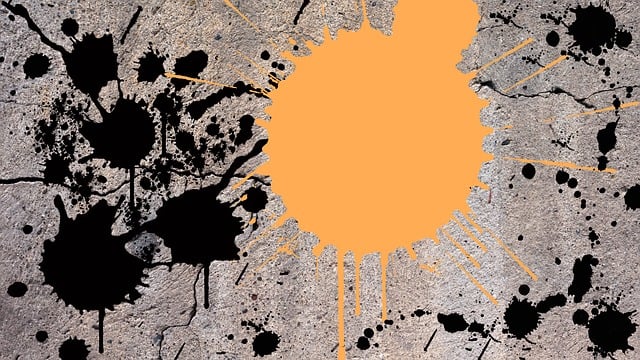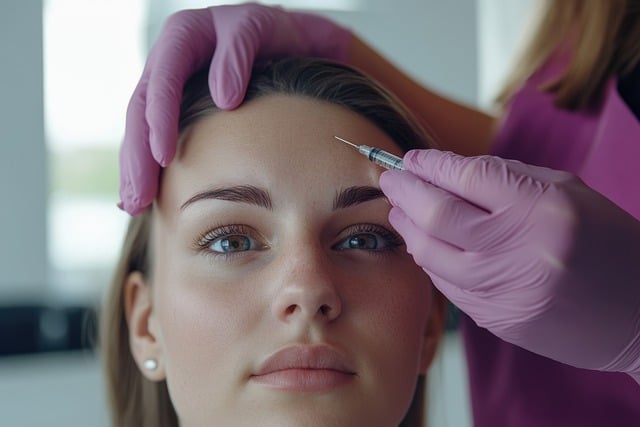Botox treatments effectively reduce crow's feet by temporarily paralyzing overactive facial muscles responsible for skin creasing. Derived from bacterial protein, Botox blocks nerve signals, preventing muscle contractions and dynamic wrinkle formation. This non-surgical procedure offers fast results, a long-lasting effect (3-6 months), and minimal side effects, making it a safe, cost-effective anti-aging option. A simple process involving consultations, numbing, injections, and post-treatment care ensures optimal results while maintaining natural beauty.
“Experience the transformative power of Botox Treatments for Crow’s Feet—a common concern plaguing many. This comprehensive guide delves into the intricate world of cosmetic enhancements, focusing on a popular solution for these fine lines and wrinkles. We explore the science behind Botox, its benefits, and the step-by-step process involved in treatments. From understanding the causes of Crow’s Feet to addressing potential side effects, this article equips you with all the knowledge needed to make an informed decision about your facial aesthetics.”
Understanding Crow's Feet: Causes and Anatomy

Crow’s feet are small lines that form at the corner of your eyes, extending to your cheeks—a telltale sign of aging often exacerbated by facial expressions like smiling or squinting. Understanding their origins is key to effective treatment. These wrinkles primarily result from muscle movement and skin relaxation over time. The muscles around our eyes, being some of the most expressive on our faces, are particularly susceptible to dynamic wrinkling.
The anatomy involved includes the orbicular occlusi muscle, responsible for closing our eyes, and the temporal facial muscle, which plays a role in raising the eyebrows. As these muscles contract repeatedly, they can lead to permanent creasing of the skin, forming crow’s feet. Botox treatments offer a solution by temporarily paralyzing these overactive muscles, reducing the frequency and depth of facial expressions that contribute to crow’s feet.
What is Botox? Unraveling the Science Behind It

Botox, a protein derived from bacteria, has revolutionized cosmetic procedures, particularly for treating fine lines and wrinkles, including those annoying crow’s feet around the eyes. When injected into specific muscles, Botox blocks nerve signals, temporarily paralyzing or reducing the contraction of these muscles. This action prevents the formation of dynamic wrinkles caused by repeated facial expressions.
The science behind it is both intricate and fascinating. By targeting specific muscle groups, Botox treatments smooth out skin, providing a more youthful appearance. It’s important to note that this procedure is not just about aesthetics; it offers a non-surgical solution for individuals seeking to alleviate the visual signs of aging. In terms of botox treatments, it provides a temporary yet effective method to enhance one’s natural beauty and boost confidence.
The Benefits of Botox for Treating Crow's Feet

Botox has emerged as a popular and effective solution for treating crow’s feet, those fine lines that can make us look tired or concerned. The benefits are numerous: it’s a non-surgical, minimally invasive procedure that offers fast results. By relaxing the facial muscles that cause wrinkles, Botox treatments can significantly reduce the appearance of crow’s feet in just a few days to a week.
One of the key advantages of Botox for crow’s feet is its ability to provide long-lasting results with minimal downtime. Compared to other anti-aging treatments, Botox has a longer lasting effect, often up to 3-6 months, depending on the individual and their metabolism. This makes it a cost-effective and convenient option for maintaining a youthful appearance. Additionally, Botox treatments are safe and well-tolerated by most people, with minimal side effects such as temporary redness or swelling at the injection site.
The Botox Treatment Process: Step by Step

The process of a Botox treatment for crow’s feet is a relatively simple and non-invasive procedure. It typically involves several steps to ensure optimal results. First, during the initial consultation, a dermatologist or trained professional will assess your facial structure, skin condition, and discuss your expectations. They will determine if Botox is suitable for you and create a personalized treatment plan. Before the actual procedure, the area to be treated may be cleaned and numbed to minimize any discomfort.
Next, using fine needles, the healthcare provider will inject small amounts of Botox into the specific muscle groups responsible for the formation of crow’s feet lines and wrinkles. The injections are usually quick and may cause minimal discomfort or redness. After the treatment, you might experience some temporary swelling or bruising, but these side effects typically subside within a few days. It’s essential to follow post-treatment care instructions, including staying hydrated and avoiding strenuous activities for a short period, to aid in the healing process and maximize the benefits of your Botox treatments.
Safety and Side Effects: What You Need to Know

Botox treatments for crow’s feet have become a popular non-surgical option for those seeking to reduce the appearance of fine lines and wrinkles. However, as with any cosmetic procedure, it’s crucial to be aware of the potential safety considerations and side effects. Botox is generally safe when administered by a qualified healthcare professional, but like any foreign substance injected into the body, there are risks.
Common side effects include temporary redness, swelling, or discomfort at the injection site. In some cases, patients may experience headaches, nausea, or muscle weakness. More serious but rare side effects can include allergic reactions, bleeding disorders, or infection. It’s important to choose an experienced provider who follows proper sterilization protocols to minimize these risks. Before undergoing any Botox treatment, openly discuss your medical history and concerns with your doctor to ensure the best possible outcome.
Maintenance and Follow-up Care After Botox Treatment

After undergoing Botox treatments for crow’s feet, proper maintenance and follow-up care are essential to maximize results and ensure a smooth recovery. It’s crucial to avoid strenuous activities and intense physical exercise for at least 24 hours following the procedure to prevent bleeding or bruising. Additionally, keeping the treated area clean and moisturized is vital; use gentle, non-irritating products as directed by your dermatologist.
During the initial weeks post-treatment, it’s important to be mindful of potential side effects like temporary redness, swelling, or a slight droop in the treated area. These symptoms are usually mild and subside quickly. Regular check-ins with your healthcare provider are recommended to assess healing and address any concerns promptly. Staying hydrated, eating nutritious meals, and getting adequate rest can also aid in the recovery process and contribute to the longevity of your Botox treatments’ effects.
